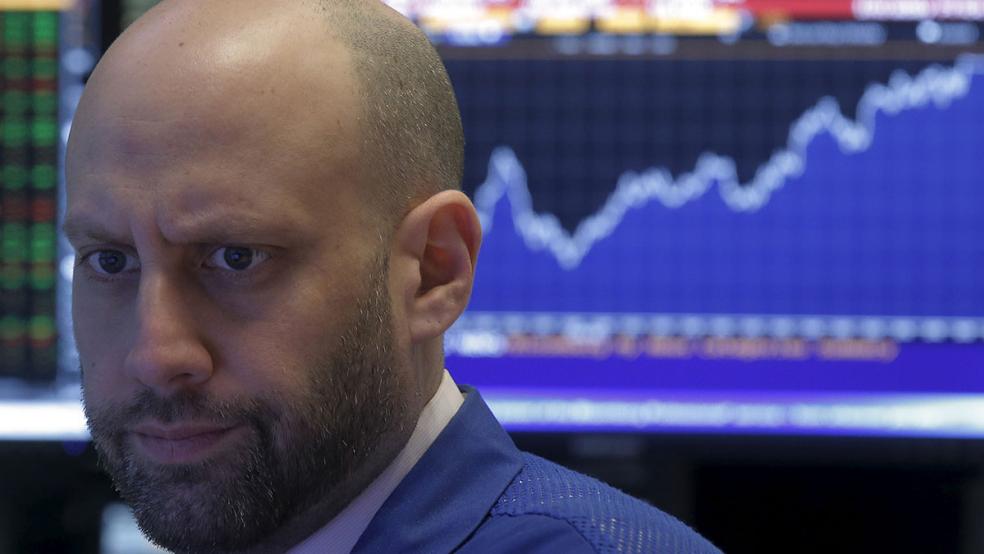We’ve just witnessed the greatest stock market comeback in history. The Dow Jones Industrial Average's 11.3 percent tumble into its January low (with a retest in February) is the largest on record for a quarter that finished in the green. (The next closest drawdown was during the 1930s.)
Impressive stuff. For the quarter, the Dow gained 1.5 percent for the quarter. But the more representative S&P 500 gained just 0.8 percent, while the tech-heavy Nasdaq Composite lost 2.8 percent and the small-cap stocks in the Russell 2000 lost 1.9 percent.
Those final numbers belie the undercurrent of March's powerful rally, which had a bit of a different flavor. The S&P 500 gained nearly 7.0 percent, its second best month since October 2011. Financial stocks gained 6.6 percent for their best month since March 2012. And crude oil gained 14.1 percent for its best month since late 2011.
Where do we go from here as the Dow now struggles just below 18,000 — a level that's limited upward progress since late 2014?
Related: The One Data Point That Could Determine Whether This Rally Lasts
A hint that all is not well can be seen in the way gold outperformed in Q1: The yellow metal, a classic safe haven asset, gained 16.1 percent, its best quarter since 1986 and its best start to the year since 1974. Treasury bonds, another safe haven, gained nearly 3 percent, their best performance since the middle of 2012.
A similar story is told from the sector-level performances: Defensive utility stocks led the way while financials and health care (mainly, speculative biotechs) were slammed.
Despite the strong month in March, other indications of weakness lie just below the surface amid lingering focus on the timing and pace of possible Federal Reserve interest rate hikes later this year.
Friday's solid March jobs report, as well as indications that core inflation is heating up, has cast doubt on the longevity and practicality of recent dovish comments from Fed Chair Janet Yellen. The strengthening of economic data will put additional pressure on the Federal Reserve to raise interest rates at its June meeting.
Related: The End of the Jobs Crisis May Finally Be in Sight
Moreover, on April 11, the Q1 earnings season kicks off. Currently, analysts are looking for a 6.9 percent year-over-year drop in S&P 500 profits — which would cap the worst run of contracting earnings since the recession.
No wonder, on a technical basis, stocks look so vulnerable. You can see this in the slow decline in measures of market breadth, or the percentage of stocks participating to the upside. During the initial climb out of the Feb. 11 low, there were a number of up days (Feb. 17, March 1, March 11) in which there were more than 2,000 net advancing issues on the NYSE. Those have faded, giving way to heavy downside days of roughly 1,500 net declining issues.

The decline in buying interest — as investors focus on fewer and fewer stocks — has pulled down the 20-day moving average of the NYSE net advancing issues line from a peak of 900 to just 262 now while stock prices, for now, remain range-bound.
There is good reason for this. After the impressive rally, stocks have become fully valued. According to Bloomberg data, the S&P 500 is just 4 percent or so from reaching the average year-end 2016 target of Wall Street strategists. And we're less than a week into the fourth month of the year.
Related: The U.S. Economy Has Stalled, Again
According to research by SentimenTrader, historically, stocks have — not surprisingly — underperformed when fully valued. When undervalued by 15 percent or more, the S&P 500 advanced at an annualized rate of 12.1 percent. When fairly valued, the annualized return dropped to just 4.6 percent. At the low back in February, stocks were 20 percent undervalued.
Of course, a stronger economy, lower unemployment and higher inflation might be good for the economy; but it won't be good for a stock market addicted to cheap money stimulus. If the Fed is forced to raise rates again, possibly as soon as April but more likely in June, that will worsen the weak oil/strong dollar dynamic that's weighing so badly on corporate earnings.
With the second quarter underway, we will now see if the bears will emerge from a multi-month hibernation to reverse what's been a historic, uninterrupted seven-week uptrend.
Early indications suggest something has started to growl.






